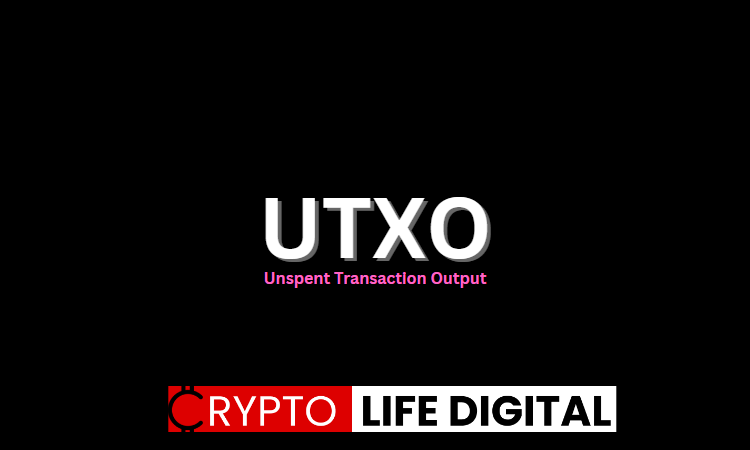A Brief Guideline On The Unspent Transaction Output (UTXO)

Unspent Transaction Output Known as UTXO is one of the terms used in the cryptocurrency world to refer to transaction input and output.
Be that as it may, it is quite important to take into consideration all the necessary terms that you come across as you navigate across the cryptocurrency space as a newbie.
this article will give you an overview of the concept of UTXO.
Definition of Unspent Transaction Output (UTXO)
The Concept of Unspent Transaction Output (UTXO) is the output from a transaction that a user owns and can spend later in another transaction.
The core principle of the Bitcoin and blockchain UTXO model structure overall is that The total input for a transaction must be equal to the total output.
Read Also: 7 Crypto Exchanges Where You Can Stake Your Digital Assets
UTXO principle prevents double-spending. Each Bitcoin exchange (where Bitcoin is sent and gotten) has two sections: information inputs and outputs.
Inputs resemble cash in your wallet. At the point when you need to send Bitcoin to somebody, you want to involve a portion of the cash from your wallet as a contribution for the exchange. These data sources are called UTXOs. They address the unspent or unused Bitcoin you have. Outputs, resemble the cash you are providing for somebody.
At the point where you send Bitcoin, you determine the sum you need to send to the beneficiary
address.
The transaction makes new results, which are UTXOs doled out to the beneficiary address, demonstrating that they presently own that Bitcoin.
Read Also: Guide On Bitcoin Lightning Network
The Genesis Of (UXTO) Model
The (UTXO) model developed over time because of Adam Back’s proposal in 1997 for the usage of the Hashcash proposal, which serves as the basis for Hal Finney’s proposal.
Hal Finney now uses reusable Proofs of Work (PoW) proposals. In 2009 when Satoshi Nakamoto released Bitcoin, it brings about the global implementation of the Unspent Transaction Output (UTXO) model in practice.
Aside from Bitcoin, Cardano also makes use of an extended version of the UTXO model known as Extended Unspent Transaction Output ( EUTXO).
The Unspent Transaction Output (UTXO) Model
- The UTXO model provides an avenue for users to be in total control of their funds and also at what instances they can use their funds or token.
- The UTXO model offers privacy benefits to users. users of Bitcoin can handle each UTXO separately by storing each UTXO in a unique address.
By using a unique address to receive each UTXO, users can hide the connection between their UTXOs from public knowledge. To a spectator of the blockchain, it is challenging to learn which UTXOs have a place with which clients.
- UTXO model also enhances better transparency and audibility of Bitcoin and other Altcoins that use this model compared to the centralized system.
- The UTXO model guarantees that the bitcoin you spend in exchange is legitimate and has not been spent previously. It additionally keeps up with the exchange history and permits anybody to confirm the trustworthiness of exchanges/transactions.
By monitoring UTXOs, the Bitcoin network guarantees that individuals can spend the Bitcoin they own. Thus, it alleviates the problem of double spending.
Read Also: Comprehensive Guide On Exchange Token
Typical Examples Of The UTXO Model
Let us begin by using our common understanding of a centralized system, for instance, when you buy anything at a store using cash, you pay the cashier the whole amount, take the products, and receive the change.
You don’t split a ten-dollar bill to purchase five-dollar things. Instead, you give up a ten-dollar bill and obtain the new five dollars as a change plus the products.
A similar idea applies to UTXOs. In each Crypto transaction, UTXOs are consumed entire, regardless of whether the expected installment is a small portion of the first UTXO.
Utilizing the picture above, to pay for some item or service worth 6 BTC, however, you just have a UTXO of 10 BTC: You will make a transaction that consumes up the whole UTXO of 10 BTC and produce two other new UTXOs: one for paying with 6 BTC and another for yourself with 4 BTC value.
The UTXO you pay to yourself is referred to as the change UTXO, and your wallet will automatically track it to give you the final balance of 4 BTC.
Each time you make a payment for a smaller value than the available value of UTXOs, your wallet automatically creates the change UTXO for your balance.
How Are UTXOs Made?
UTXOs are made through the utilization of existing UTXOs. Each Bitcoin exchange is made out of data inputs and output. Inputs consume a current UTXO in existence, while output makes another UTXO.
Anyway, if old UTXOs are obliterated to make new UTXOs, then, UXTO is created using Coinbase transaction.
A Coinbase transaction is a unique sort of exchange that makes new bitcoin a prize for the miner of a block. Since new Bitcoin is being made, the Coinbase transaction has no data input and at least one output. Therefore, the output of the transaction is the new UTXO.
Conclusion
Understanding UTXO and the way it works is not just a routine in a blockchain transaction, it is a mainstay system that helps abolish crude transactions and brings about improvement in the integrity of the blockchain network.
Follow us on Twitter, Facebook, Telegram, and Google News

Tolu Zach is a multifaceted professional with expertise in both crypto content creation and medical laboratory technology. With a unique blend of analytical skills and industry knowledge, Tolu navigates the complexities of cryptocurrency while maintaining a pivotal role in healthcare. Trusted for insightful analysis and accurate diagnostics, Tolu excels in diverse fields.








